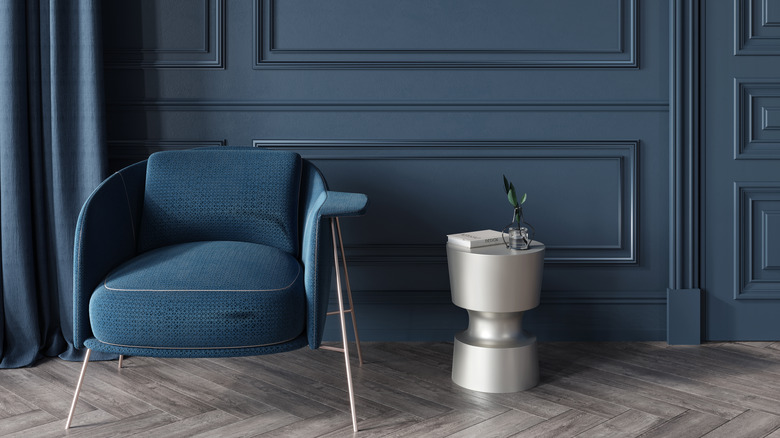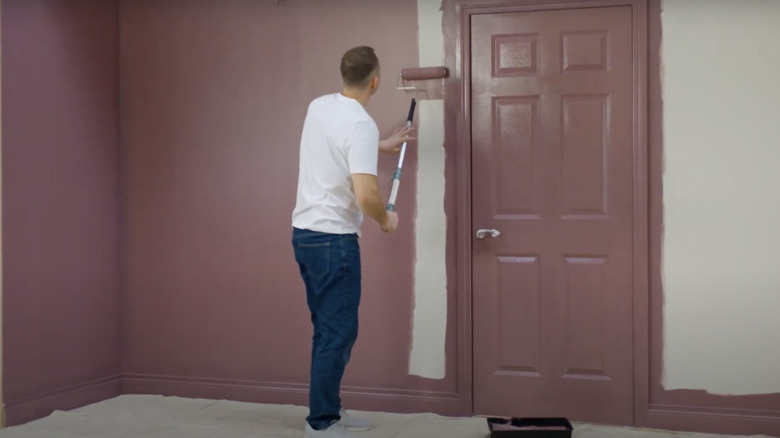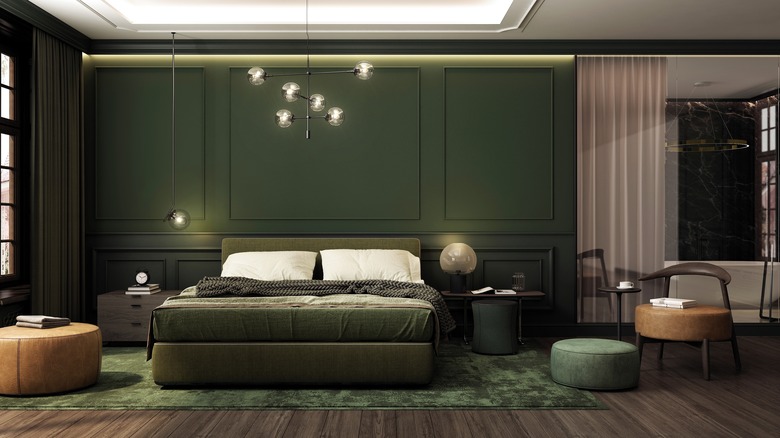The Benefits Of The Color Drenching Paint Trend (& How To Pull It Off Like A Pro)
As an interior designer, part of my job is to stay up to date on exciting new ways to transform a space using color. One such recent trend that has taken the design world by storm is a century-old paint technique that involves painting the walls, trim, woodwork, and ceiling in the same colorful hue. Originating in Europe as a method to help historic homes feel larger and tidier, this design approach came to be known as color drenching, and its popularity spread to the rest of the world.
When done correctly, the effect is mesmerizing, creating a space that is somehow both intimate and energizing, cozy yet endless. By enveloping a room in a consistent shade, it creates a cocoon of color, surrounding you in an immersive high-end design experience.
This effect works because the consistent wash of color simply tricks the eye's perception of the boundaries of the space and disguises visual clutter in a streamlined color blur. Because this technique feels so enveloping, it is incredible in spaces where you entertain, such as in the dining or living room, to create an intimate yet elegant atmosphere. Similarly, thanks to the cozy vibes it exudes, it is also ideal for private spaces like the bedroom or a library. By ensuring the space has enough consistent color to feel cohesive and committed to the aesthetic, while also enough textural and material variation to feel balanced, this simple paint technique can completely redefine your entire room with just a paintbrush.
How exactly does color drenching work?
How is it possible to get such a dramatic result from simply painting all surfaces the same color?
Your eyes are used to seeing wall start and stop points at the ceiling, trim, doors, windows, and cabinetry, which all work together in the brain to form the boundaries of the space. When all main surfaces are painted the same color, there are two things that work together to trick the eye. First, the lines of the room are blurred, thanks to a lack of the typical color change at the ceiling line, so the scale of the room and your perception of the space is distorted. This makes larger spaces feel more intimate and cozier, as the ceiling becomes part of the dome of color. Oddly enough, it also makes small spaces feel expansive, as the ceiling break is no longer distinct, meaning the eyes don't stop as they gaze upward.
The second way this technique tricks the eye is to calm the visual clutter of the space by having it all painted the same shade, including trim, doors, cabinets, radiators, air returns, and anything else you want to disappear into the color cocoon. Typically, when you see a change of color for those elements, your eyes stop and read the item as a standalone visual block. When it is all painted the same unifying hue, your eyes see the elements as a whole textural surface or backdrop, creating a calming, less cluttered vibe.
How to pull of color drenching look like a pro
To master this color drenching aesthetic, I'd recommend that it's essential to create depth by incorporating multiple paint finishes and textures. Use eggshell sheen paint on walls, satin or semi-gloss on woodwork, and flat on the ceiling, or turn that expected combo on its head and do a lacquer ceiling with flat cabinetry. Introduce textural variations in the main hue to really solidify the aesthetic, such as floor-to-ceiling velvet drapes, small-print wallpaper, or soft upholstered furniture. Similarly, color drenched ornate moldings such as crown, medallions, wainscoting, and picture molding look incredible, as they create additional texture and design value.
Color-wise, a room encompassed in a dark or jewel tone brings some major drama, while a softer muted hue or earthy midtone would have a serene vibe. If you have an old home with original character, historical hues of that era will complement the style like a charm. If you want a little more color variation in the space, use gradients of the same shade for an ombre effect.
Finally, introduce a layered variety of materials and hues when styling to help keep the space feeling balanced rather than overwhelming. By both committing to the main tone in various textures and finishes, as well as adding a harmonious array of other elements, your color drenched room will feel like an all-encompassing colorful and clutter-free dream. Given that effect, I'd bet good money it won't be the last room you color drench, either!


